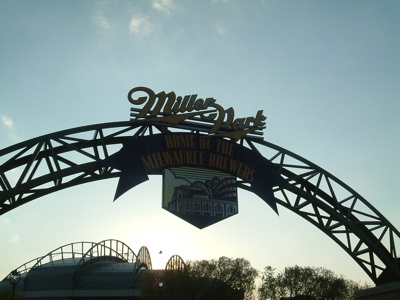 Miller Park was built amongst controversy, greed, and, unfortunately, tragedy. It took over two decades for Miller Park to evolve from a simple stadium task force to the ultra-modern stadium that it is today. The controversy and greed would revolve around future commissioner of baseball Bud Selig, and the controversy would turn him from one of Milwaukee's favorite sons to a man eliciting boos during the first regular season game played at the stadium he fought hard to get built.
Miller Park was built amongst controversy, greed, and, unfortunately, tragedy. It took over two decades for Miller Park to evolve from a simple stadium task force to the ultra-modern stadium that it is today. The controversy and greed would revolve around future commissioner of baseball Bud Selig, and the controversy would turn him from one of Milwaukee's favorite sons to a man eliciting boos during the first regular season game played at the stadium he fought hard to get built.
On March 16, 1987, the Greater Milwaukee Committee formed a task force that set out to determine whether the aging Milwaukee County Stadium should be renovated, or if a new, modern stadium should be built. This task force was formed at the insistence of the Brewers, as they contended that County Stadium would soon become unusable. A year later the task force determined that a new $100 million open-air stadium should be financed by the Brewers and private financiers as opposed to a renovation of County Stadium. The task force even determined that the stadium could be opened in time for the 1992 season, and they proposed a list of four possible sites for the stadium: Menomonee Valley, the Milwaukee County fair grounds, Oak Creek, and the site of the popular Summerfest musical festival. In 1989 the task force finalized the plans and determined that the Menomonee Valley site, located in the in heart of what was once the industrial focal-point of Milwaukee, would be the best location for the new stadium since it would bring the Brewers closer to downtown Milwaukee and possibly help revitalize the Menomonee Valley area. This same year the Milwaukee County Board endorsed using limited tax money to fund the new stadium, even though the project was originally designated to be funded entirely by private funds. This would be the first step in what would turn out to be a very expensive taxpayer project.
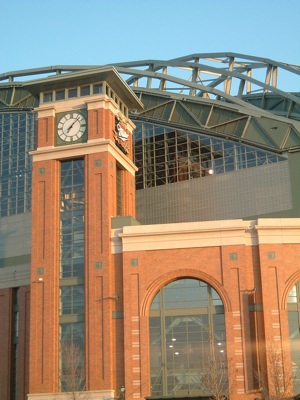 Bud Selig was a local hero in Milwaukee mainly because of his work with Milwaukee baseball. In 1965 he fought, albeit unsuccessfully, to prevent the Milwaukee Braves from moving to Atlanta. For the next five years he tried to find a team to bring to Milwaukee, and in 1970 he succeeded by leading a group of investors with his own $300,000 stake to bring the Seattle Pilots out of bankruptcy. The team was moved to Milwaukee so fast that Brewers patches were sewn over the Pilots' logos. At this time Selig commented that he wanted to be the first owner to finance his own ballpark since Walter O'Malley built Dodger Stadium in 1962 for $18 million. What Selig failed to realize, however, was that an economic shift was about to take place in the sport of baseball. As baseball began to play more and more on cable television as opposed to broadcast television in the late 1980s the larger markets were awash with new revenues that allowed them to drastically outspend smaller market teams. This would not help Milwaukee, which was the 27th largest metropolitan area in the nation in 1970, and surrounded by Minneapolis to the west, Chicago to the south, and nothing but Lake Michigan to the east. Even without these problems, though, it is unlikely Selig could had financed Miller Park on his own.
Bud Selig was a local hero in Milwaukee mainly because of his work with Milwaukee baseball. In 1965 he fought, albeit unsuccessfully, to prevent the Milwaukee Braves from moving to Atlanta. For the next five years he tried to find a team to bring to Milwaukee, and in 1970 he succeeded by leading a group of investors with his own $300,000 stake to bring the Seattle Pilots out of bankruptcy. The team was moved to Milwaukee so fast that Brewers patches were sewn over the Pilots' logos. At this time Selig commented that he wanted to be the first owner to finance his own ballpark since Walter O'Malley built Dodger Stadium in 1962 for $18 million. What Selig failed to realize, however, was that an economic shift was about to take place in the sport of baseball. As baseball began to play more and more on cable television as opposed to broadcast television in the late 1980s the larger markets were awash with new revenues that allowed them to drastically outspend smaller market teams. This would not help Milwaukee, which was the 27th largest metropolitan area in the nation in 1970, and surrounded by Minneapolis to the west, Chicago to the south, and nothing but Lake Michigan to the east. Even without these problems, though, it is unlikely Selig could had financed Miller Park on his own.
"The bottom line is the Seligs really couldn't afford to own the team," said former Milwaukee mayor John O. Norquist. "They were looking for other revenue streams." Selig was certainly not among the richest owners in the league. The Brewers and the car dealership he inherited from his father were Selig's main sources of income. Selig eventually realized he couldn't afford the stadium on his own, but when he looked at what other owners in the league were doing he realized he could probably build a new stadium without contributing a large amount of his own money. Jerry Reinsdorf had threatened the city of Chicago and the state of Illinois by saying he would move the White Sox to Florida if the state did not build the Sox a new stadium. The Illinois legislature approved a new $150 million stadium at the last minute on a summer night in 1988 to begin the process that would eventually lead to the new Comiskey Park. In 1989 an investment group that included future President George W. Bush purchased the Texas Rangers. Bush's share was the smallest of the group, but still entailed a sizable investment of $606,000. The group was able to secure a publicly financed stadium, that would eventually become Rangers Ballpark at Arlington, and the Rangers' value increased dramatically. The group eventually sold the Rangers in 1998 for $250 million, which meant a $14.9 million share for George W. Bush as he was preparing his run for the presidency. Selig, though, had gained a sterling reputation in Milwaukee so he never used threats to get his new stadium built. Selig used the results from the task force to try and convince Wisconsin politicians that his team needed a new stadium. He would never explicitly say the team would leave Milwaukee, but he would hint at it by saying the team could not economically survive in Milwaukee without a new stadium. Selig may not have been overtly harsh in his dealings with Milwaukee and the state of Wisconsin, but some of the deception he used would certainly not endear him to politicians and other public figures in the state, not to mention the citizens of Wisconsin.
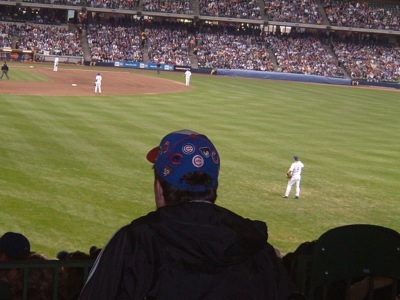 While politicians agreed that the Brewers needed a new park, they balked at the idea of building the new stadium in the same area as Milwaukee County Stadium. If the stadium was going to be built partly with taxpayer money the stadium should be built in downtown Milwaukee where it would help urban renewal. Selig stated that this would have been preferable if there was a large enough site, but Brewers' fans penchant for tailgating meant, in Selig's eyes, that the new stadium must be built by County Stadium where there were acres of available land for parking. Many politicians now realize that they may have been duped by the eloquent Selig. It seemed that he wanted to control every possible revenue source around the stadium including parking and restaurants so the area around County Stadium would have been his best option. Selig strengthened his position by using his friends throughout Milwaukee and the state of Wisconsin. Robert Kahlor was a friend of Selig's who owned the Milwaukee Journal and the Milwaukee Sentinel as well as WTMJ, the station that carried Brewers' games. Kahlor was an outspoken supporter of Selig's plans for the new stadium, and it led to the newspaper's writers losing credibility when they wrote about the stadium deal. Most readers assumed the writers were instructed to support the stadium deal. Another friend of Selig's was conservative radio host Charlie Sykes, who used his influence throughout the state of Wisconsin to drive home fears that the Brewers would move if they didn't get a new stadium. He later regretted misleading the public in that way, "I used up a lot of my credibility with my audience, and to be a conservative pushing a tax increase is a difficult thing."
While politicians agreed that the Brewers needed a new park, they balked at the idea of building the new stadium in the same area as Milwaukee County Stadium. If the stadium was going to be built partly with taxpayer money the stadium should be built in downtown Milwaukee where it would help urban renewal. Selig stated that this would have been preferable if there was a large enough site, but Brewers' fans penchant for tailgating meant, in Selig's eyes, that the new stadium must be built by County Stadium where there were acres of available land for parking. Many politicians now realize that they may have been duped by the eloquent Selig. It seemed that he wanted to control every possible revenue source around the stadium including parking and restaurants so the area around County Stadium would have been his best option. Selig strengthened his position by using his friends throughout Milwaukee and the state of Wisconsin. Robert Kahlor was a friend of Selig's who owned the Milwaukee Journal and the Milwaukee Sentinel as well as WTMJ, the station that carried Brewers' games. Kahlor was an outspoken supporter of Selig's plans for the new stadium, and it led to the newspaper's writers losing credibility when they wrote about the stadium deal. Most readers assumed the writers were instructed to support the stadium deal. Another friend of Selig's was conservative radio host Charlie Sykes, who used his influence throughout the state of Wisconsin to drive home fears that the Brewers would move if they didn't get a new stadium. He later regretted misleading the public in that way, "I used up a lot of my credibility with my audience, and to be a conservative pushing a tax increase is a difficult thing."
After years of handshaking and deal making, Selig was ready to bring his proposal to the people in 1995. Selig and Wisconsin Governor Tommy G. Thompson agreed on a deal to build a $250 million ballpark at Selig's proposed site near County Stadium. They signed a "memorandum of understanding" that stated the Brewers would contribute $90 million while the remaining $160 million would come from a 0.1% sales tax levied in the five counties surrounding the stadium. Of course, a memorandum means very little in government, and the tax would have to get through the state legislature first. In what many call the most lobbied issue in the history of Wisconsin, the bill was brought to the Wisconsin Senate on October 6, 1995 after it had already passed the state assembly. Known as Wisconsin Act 56 it lost 16-15, but the proponents of the bill pushed for a reconsideration. After the Senate reconvened the bill lost by the same margin. Selig, who had been pacing the halls outside the Senate floor, was enraged, and he sent for Milwaukee mayor John O. Norquist at 4 am. Norquist assumed that Selig wanted to broker a deal for a downtown ballpark, but Selig instead began a tirade in which he yelled, "You're the one who's going to be held responsible for this! You killed baseball in Milwaukee!" Norquist responded by contending that Selig was ripping off the Wisconsin taxpayers, and Selig stormed out of the room. At 4:30 am the Senate majority leader was ready to close the session, but he was stopped by the assistant majority leader, Margaret Farrow, who revealed that someone planned to change their vote. Republican George Petak, from Racine, had opposed the bill because he did not believe his county should be taxed for the stadium because Racine was not integral to the economy of Milwaukee. He suddenly changed his mind, however, and has since contended that he was promised nothing in return. Nine months later Petak became the first Wisconsin politician to be recalled when the citizens of Racine voted to oust him, mainly because of the stadium deal.
 The Brewers now had to step up and contribute their money to the project, but the reality was that the Brewers couldn't even afford the $90 million they had promised. Governor Thompson had brokered a deal with Selig to have the Wisconsin Housing and Economic Development Authority lend the Brewers $50 million, but this deal was aborted when Thompson realized the Brewers had no collateral to offer the state for this money. All of the Brewers' collateral had been pledged to other lenders. The $50 million eventually came out of the taxpayers' pockets. The rest of the money came from the Brewers selling the name of the stadium to the Miller Brewing Company. This, in essence, meant that the Brewers only true contribution to the stadium came from the naming rights of the stadium itself. The groundbreaking of the stadium was delayed from 1995 to November 8, 1996 while the finances were being worked out. More money was chalked up to the taxpayers in February of 1997 when the stadium board leased $40 million worth of equipment for the park. State Senator Joe Wineke fought this in the legislature, but in May he was given only a minor concession when the Brewers agreed to more fully disclose their stadium finances. Another controversy erupted in April of 1998 when the city of Milwaukee struggled to find a way to avoid defaulting on a $9 million payment on the stadium. The financial problems would pale, though, when a major tragedy occurs in the summer of 1999.
The Brewers now had to step up and contribute their money to the project, but the reality was that the Brewers couldn't even afford the $90 million they had promised. Governor Thompson had brokered a deal with Selig to have the Wisconsin Housing and Economic Development Authority lend the Brewers $50 million, but this deal was aborted when Thompson realized the Brewers had no collateral to offer the state for this money. All of the Brewers' collateral had been pledged to other lenders. The $50 million eventually came out of the taxpayers' pockets. The rest of the money came from the Brewers selling the name of the stadium to the Miller Brewing Company. This, in essence, meant that the Brewers only true contribution to the stadium came from the naming rights of the stadium itself. The groundbreaking of the stadium was delayed from 1995 to November 8, 1996 while the finances were being worked out. More money was chalked up to the taxpayers in February of 1997 when the stadium board leased $40 million worth of equipment for the park. State Senator Joe Wineke fought this in the legislature, but in May he was given only a minor concession when the Brewers agreed to more fully disclose their stadium finances. Another controversy erupted in April of 1998 when the city of Milwaukee struggled to find a way to avoid defaulting on a $9 million payment on the stadium. The financial problems would pale, though, when a major tragedy occurs in the summer of 1999.
Big Blue was the giant 467-foot crane built by Mitsubishi Heavy Industries to lift the enormous roof pieces of Miller Park into place. The first piece was lifted in January of 1999 while it was snowing, but tragedy would strike on July 14 when the weather was perfect, and the crane was making its 10th lift. While Big Blue was lifting a 450-ton roof section the crane gave way and collapsed, killing three ironworkers. The roof lifts would be delayed six months while a new crane, Demag, was built, and the stadium opening would be delayed a year. The damage to the stadium, which was largely covered by insurance, was estimated at $100 million. A lawsuit was filed in August of 1999 against Mitsubishi on behalf of the widows of the three dead workers. The suit was decided by a jury in December of 2000, and almost $100 million in damages was awarded to the widows. In April of 2000 the stadium board stated that the Chubb Insurance Group was lagging on its insurance payments to cover the repairs, and that the project may be $80 million short when it was concluded. The situation was eventually resolved, but it just added to the financial problems of the stadium.
On April 6, 2001, after all of the financial issues and tragedy, Miller Park was ready for its first regular season game. The Cincinnati Reds lost to the Brewers 5-4, and President George W. Bush was on-hand as well as former Wisconsin Governor Tommy G. Thompson, who was then Bush's Secretary of Health and Human Services. Bud Selig threw out the game's first pitch, but Milwaukee's favorite son experienced what would not be the last boos he would hear in Miller Park. He would hear more boos in the stadium when he would declare the 2002 All-Star Game that was played at Miller Park a tie after both sides ran out of pitchers. Along with crying, ties are a major no-no in the sport of baseball. Although only a minority of the fans at the game booed Selig, it was obvious his heavy-handed efforts had irked many citizens of Milwaukee. He did manage to throw a strike, however, which couldn't be said of the President who bounced his pitch short of the plate. Former Governor Thompson was seething at the opening, and was especially mad that his contribution to the park was not recognized. Because of this he vowed to never set foot in Miller Park again. In January of 2004 the Selig family announced they were selling the Brewers, and in October Los Angeles investor Mark Attanasio bought the team for more than $220 million. Selig had left his legacy, or perhaps his stain, on the stadium that turned him from a Milwaukee favorite to one of the most hated men in the city.
Getting There
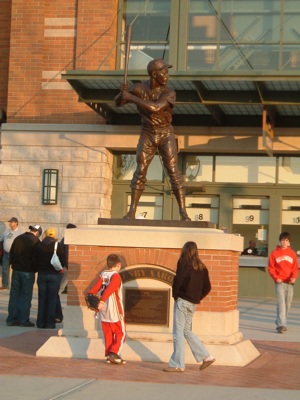
Miller Park is really in the middle of nowhere. It is surrounded by acres of parking lots (+1) and the I-94 expressway runs past it to the north (+1). You pretty much have no choice but to drive to the stadium. Technically, you could walk along the Hank Aaron State Trail from downtown Milwaukee (+1), but most people aren't willing to walk seven miles to get to a ballpark (-1). The parking isn't much closer, though. Unless you park in one of the premium parking lots for you'll have to take a brisk walk across a bridge over the Menomonee River. The walk does lead to a decent savings (+1), though, and at least you can walk off all of the food you will eat at the numerous tailgate parties going on.
Score: 8/10
Tickets and Seating
The most expensive tickets at Miller Park are the box seats around the dugouts and behind home-plate, and can be had for $80, but those seats are behind the seats held by season tickets holders so you can't actually buy tickets right behind the dugouts (-1). The rest of the park is pretty reasonable, though (+1). Box seats that offer views not much worse than the $75 seats are all around $40. That is, of course, unless the Brewers are playing a "Marquee Game." Tickets for marquee games are around $10 more expensive (-1). For the truly thrifty there are $8 seats that are way up in Bernie's Terrace (+1). There are also a number of obstructed-view seats around the park (-1), known as the Uecker Seats, that can be had for only $1 (+1). Even though there are obstructed view seats the upper-deck is still incredibly high up (-1). A routine pop-up can look like a homerun in the nosebleed seats. Usually obstructed seats are caused by an upper-deck that is closer to the field, but Miller Park's upper-deck is so high up that the closeness to the field doesn't really matter much. It is also hard to see the ball in play sometimes from seats on the lower level that are under the overhang. Although the majority of the seats at Miller Park don't offer the best views of the field they are fairly reasonable, and the box seats are pretty good deals along with offering a good view of the field (+1).
Score: 5/10
Exterior
The windows and giant roof covering Miller Park make it look like a mechanical version of Mothra from the Godzilla movies (-1). The arches and clock under the glass and metal monstrosity look pretty nice (+1), however, and are slightly reminiscent of Denver's Coors Field. There are statues outside the stadium of Brewer greats Hank Aaron and Robin Yount (+1), as well as a slightly creepy statue memorializing the ironworkers who died during the construction of Miller Park. The plaque, or at least a better statue, would have been enough to honor those workers. There is also a Little League field outside the stadium that I'm sure any kid would die to play on (+1). All of the concrete making up the parking lots around the stadium doesn't really add to the ambiance, though.
Score: 7/10
Interior
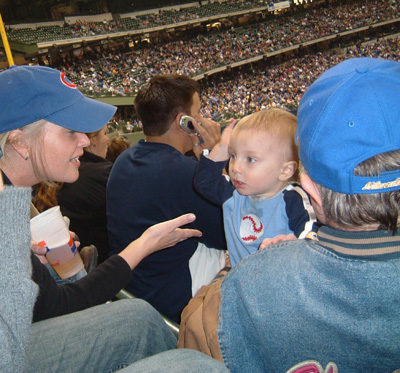
The roof doesn't look any better from the inside (-1). It almost seems like the game is being played indoors even when the roof is open because the glass walls are so high, and the roof is so immense (-1). Bernie Brewer still has a home in the stadium (+1), but instead of sliding into a mug of beer he just slides down onto a platform. It's really pretty anticlimactic (-1), and I wasn't too impressed when he slid down the slide during my first game at Miller. There are a number of areas where you can stand and watch the game, but much of the main concourse does not give you a great view of the field (-1). Even U.S. Cellular Field had a main concourse that always allowed you a view of the field when it was first built. There is a hot tub that fans can sit in during the game (+1), but it is even more gimmicky than the pool at Chase Field.
Score: 3/10
Scoreboard
A modern stadium without a modern scoreboard would be a travesty, and Miller Park doesn't disappoint with a scoreboard that gives you more information than Dick Vitale on a sugar high (+1). Well, I guess Dick Vitale doesn't really give you a lot of useful information during his rants so that might not be a good analogy. The videoboard might not be the best in baseball, but it certainly gets the job done (+1) and is definitely big enough (+1). What makes the scoreboard great is the complement of two manual out-of-town scoreboards on the left and right outfield walls (+1). The manual scoreboards provide the perfect mix of classic baseball with the modern scoreboard (+1).
Score: 10/10
Kid Friendly
Miller Park offers a lot for families other than the game itself. Bernie's Clubhouse has slides (+1) and lots of things to jump on (+1). There are also activities for older kids such as a race against the sausages (+1) and a chance to create a custom bobblehead (+1). The Brewers also also kids 16 and under to run the bases on Sundays after home games (+1).
Score: 10/10
Fans
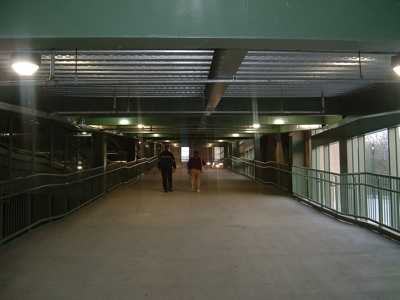
Maybe I have a bad opinion of Brewers' fans because I have only been to Miller Park during games against the Cubs, but there is a lot of trash talking that goes on and it definitely isn't friendly (-1). The fans also seem to be more into making fun of Cubs fans than the game itself (-1). I love the tailgating that goes on before the game (+1), which is a great Milwaukee tradition, but otherwise the fans seem to be a little too focused on the hazing than the game (-1).
Score: 3/10
Ushers and Trading Up
The ushers seemed nice enough (+1), but they weren't outwardly friendly. We certainly did trade up during the game, but not in the traditional fashion (+1). We moved from the lower level to the upper-deck because it was so hard to see from our seats under the overhang (-1). It seems that it is pretty easy to trade up at Miller Park (+1) since it is normally far from a sellout , but don't expect to do much trading up when the Cubs fans move north for a series.
Score: 7/10
7th Inning Stretch
The 7th inning stretch at Miller Park is one of the best outside of Wrigley (+1). It begins with the traditional "Take Me Out" fair (+1), but then it goes into a full chorus of the Beer Barrel Polka (+2), which fits Milwaukee perfectly (+1). Bernie Brewer also makes his incredibly exciting (note the sarcasm) slide to a platform, which is the only thing I take off points for (-1).
Score: 9/10
Surrounding Area
There is absolutely nothing around Miller Park (-2) unless you count the tailgating, which I'll give it some points for (+1). You have to walk miles to find anything to do outside the stadium (-2).
Score: 2/10
Final Score: 64/100

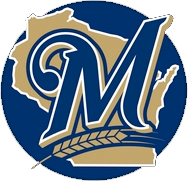
 Miller Park was built amongst controversy, greed, and, unfortunately, tragedy. It took over two decades for Miller Park to evolve from a simple stadium task force to the ultra-modern stadium that it is today. The controversy and greed would revolve around future commissioner of baseball Bud Selig, and the controversy would turn him from one of Milwaukee's favorite sons to a man eliciting boos during the first regular season game played at the stadium he fought hard to get built.
Miller Park was built amongst controversy, greed, and, unfortunately, tragedy. It took over two decades for Miller Park to evolve from a simple stadium task force to the ultra-modern stadium that it is today. The controversy and greed would revolve around future commissioner of baseball Bud Selig, and the controversy would turn him from one of Milwaukee's favorite sons to a man eliciting boos during the first regular season game played at the stadium he fought hard to get built. Bud Selig was a local hero in Milwaukee mainly because of his work with Milwaukee baseball. In 1965 he fought, albeit unsuccessfully, to prevent the Milwaukee Braves from moving to Atlanta. For the next five years he tried to find a team to bring to Milwaukee, and in 1970 he succeeded by leading a group of investors with his own $300,000 stake to bring the Seattle Pilots out of bankruptcy. The team was moved to Milwaukee so fast that Brewers patches were sewn over the Pilots' logos. At this time Selig commented that he wanted to be the first owner to finance his own ballpark since Walter O'Malley built
Bud Selig was a local hero in Milwaukee mainly because of his work with Milwaukee baseball. In 1965 he fought, albeit unsuccessfully, to prevent the Milwaukee Braves from moving to Atlanta. For the next five years he tried to find a team to bring to Milwaukee, and in 1970 he succeeded by leading a group of investors with his own $300,000 stake to bring the Seattle Pilots out of bankruptcy. The team was moved to Milwaukee so fast that Brewers patches were sewn over the Pilots' logos. At this time Selig commented that he wanted to be the first owner to finance his own ballpark since Walter O'Malley built  While politicians agreed that the Brewers needed a new park, they balked at the idea of building the new stadium in the same area as Milwaukee County Stadium. If the stadium was going to be built partly with taxpayer money the stadium should be built in downtown Milwaukee where it would help urban renewal. Selig stated that this would have been preferable if there was a large enough site, but Brewers' fans penchant for tailgating meant, in Selig's eyes, that the new stadium must be built by County Stadium where there were acres of available land for parking. Many politicians now realize that they may have been duped by the eloquent Selig. It seemed that he wanted to control every possible revenue source around the stadium including parking and restaurants so the area around County Stadium would have been his best option. Selig strengthened his position by using his friends throughout Milwaukee and the state of Wisconsin. Robert Kahlor was a friend of Selig's who owned the Milwaukee Journal and the Milwaukee Sentinel as well as WTMJ, the station that carried Brewers' games. Kahlor was an outspoken supporter of Selig's plans for the new stadium, and it led to the newspaper's writers losing credibility when they wrote about the stadium deal. Most readers assumed the writers were instructed to support the stadium deal. Another friend of Selig's was conservative radio host Charlie Sykes, who used his influence throughout the state of Wisconsin to drive home fears that the Brewers would move if they didn't get a new stadium. He later regretted misleading the public in that way, "I used up a lot of my credibility with my audience, and to be a conservative pushing a tax increase is a difficult thing."
While politicians agreed that the Brewers needed a new park, they balked at the idea of building the new stadium in the same area as Milwaukee County Stadium. If the stadium was going to be built partly with taxpayer money the stadium should be built in downtown Milwaukee where it would help urban renewal. Selig stated that this would have been preferable if there was a large enough site, but Brewers' fans penchant for tailgating meant, in Selig's eyes, that the new stadium must be built by County Stadium where there were acres of available land for parking. Many politicians now realize that they may have been duped by the eloquent Selig. It seemed that he wanted to control every possible revenue source around the stadium including parking and restaurants so the area around County Stadium would have been his best option. Selig strengthened his position by using his friends throughout Milwaukee and the state of Wisconsin. Robert Kahlor was a friend of Selig's who owned the Milwaukee Journal and the Milwaukee Sentinel as well as WTMJ, the station that carried Brewers' games. Kahlor was an outspoken supporter of Selig's plans for the new stadium, and it led to the newspaper's writers losing credibility when they wrote about the stadium deal. Most readers assumed the writers were instructed to support the stadium deal. Another friend of Selig's was conservative radio host Charlie Sykes, who used his influence throughout the state of Wisconsin to drive home fears that the Brewers would move if they didn't get a new stadium. He later regretted misleading the public in that way, "I used up a lot of my credibility with my audience, and to be a conservative pushing a tax increase is a difficult thing." The Brewers now had to step up and contribute their money to the project, but the reality was that the Brewers couldn't even afford the $90 million they had promised. Governor Thompson had brokered a deal with Selig to have the Wisconsin Housing and Economic Development Authority lend the Brewers $50 million, but this deal was aborted when Thompson realized the Brewers had no collateral to offer the state for this money. All of the Brewers' collateral had been pledged to other lenders. The $50 million eventually came out of the taxpayers' pockets. The rest of the money came from the Brewers selling the name of the stadium to the Miller Brewing Company. This, in essence, meant that the Brewers only true contribution to the stadium came from the naming rights of the stadium itself. The groundbreaking of the stadium was delayed from 1995 to November 8, 1996 while the finances were being worked out. More money was chalked up to the taxpayers in February of 1997 when the stadium board leased $40 million worth of equipment for the park. State Senator Joe Wineke fought this in the legislature, but in May he was given only a minor concession when the Brewers agreed to more fully disclose their stadium finances. Another controversy erupted in April of 1998 when the city of Milwaukee struggled to find a way to avoid defaulting on a $9 million payment on the stadium. The financial problems would pale, though, when a major tragedy occurs in the summer of 1999.
The Brewers now had to step up and contribute their money to the project, but the reality was that the Brewers couldn't even afford the $90 million they had promised. Governor Thompson had brokered a deal with Selig to have the Wisconsin Housing and Economic Development Authority lend the Brewers $50 million, but this deal was aborted when Thompson realized the Brewers had no collateral to offer the state for this money. All of the Brewers' collateral had been pledged to other lenders. The $50 million eventually came out of the taxpayers' pockets. The rest of the money came from the Brewers selling the name of the stadium to the Miller Brewing Company. This, in essence, meant that the Brewers only true contribution to the stadium came from the naming rights of the stadium itself. The groundbreaking of the stadium was delayed from 1995 to November 8, 1996 while the finances were being worked out. More money was chalked up to the taxpayers in February of 1997 when the stadium board leased $40 million worth of equipment for the park. State Senator Joe Wineke fought this in the legislature, but in May he was given only a minor concession when the Brewers agreed to more fully disclose their stadium finances. Another controversy erupted in April of 1998 when the city of Milwaukee struggled to find a way to avoid defaulting on a $9 million payment on the stadium. The financial problems would pale, though, when a major tragedy occurs in the summer of 1999.

